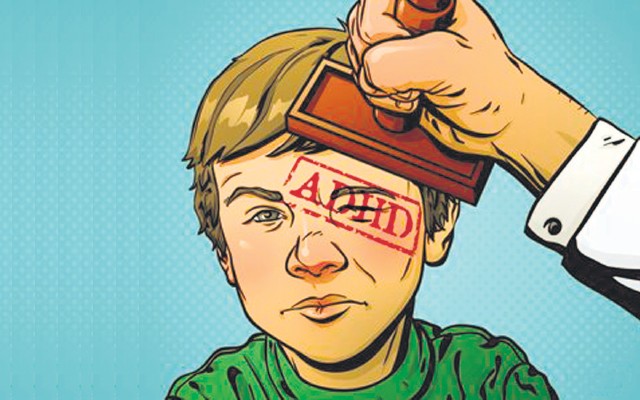The Nation
By Dr. Marcel de Roos
July 4, 2015
For teachers the perfect class is a concentrated, quiet and obedient one. Nowadays, when children stand out by what used to be called naughty, rebellious and boisterous behavior, it is much easier than before for teachers to have these children drugged with for example Ritalin or Concerta (psycho-stimulant medications). For psychiatrists, jotting down abbreviations like ADHD, PDD-NOS and ODD and subsequently prescribing drugs has become routine.
Is there a psychiatric epidemic or is there something else going on? Leading American psychiatrists (for example Dr. Allen Frances) think that ADHD (supposedly an attention and hyperactivity disorder) is severely over-diagnosed; it’s a false epidemic. Before 2000, only very serious cases were labeled with this diagnosis and only people who really needed it, were allowed to receive medication. As a consequence of the less stringent definition after 2000, the diagnosis of ADHD has increased spectacularly. Everybody now knows somebody with ADHD.
Another reason might be that qualities that used to be attributed typically to boys such as an urge for noisiness, action and forcefulness were formerly accepted, but are now regarded as a problem, especially at schools. It appears that not the boys, but the educators have changed. Boys are in essence the same as before, but the school system has become more feminine and looks upon their abundance of physical energy and enthusiasm as being an issue.
For concentration problems without hyperactivity, a separate category was devised called ODD (Oppositional Defiant Disorder). Therefore, many girls and women were included into the diagnostic criteria. PDD-NOS (Pervasive developmental disorder not otherwise specified) was brought in as a kind of residual category for people who don’t quite fit into other more specific categories.

The majority of the research concerning ADHD is financed by the pharmaceutical industry and therefore causes credibility problems.
It is to be expected that the existing criteria will be eased up more so that an increasing amount of people will be labeled as suffering from a ‘mental illness’ with all the dire consequences. The pharmaceutical industry has maintained strong ties with the psychiatric community and they have jumped at this opportunity. Big Pharma’s marketing machine is working full time in trying to sell the new drugs.
New target groups are continuously defined. At first it were predominantly the overactive little boys which were not concentrated enough. Now the dreamy girls are coming into the picture. They are diagnosed with ODD and that is supposed to be treated with medication too. Finally it’s the turn of the grown-ups; five percent of the adult population is said to be suffering from ADHD.
Using medications for ADHD involves a number of risks. The most important ones are decreased appetite and cardiovascular complaints. But also anxiety, stomach problems, dizziness, tics, skin problems and bruising are named. Less common, but potentially lethal results from taking these pills is that they can cause suicidal thoughts and psychosis. The majority of the research concerning ADHD is financed by the pharmaceutical industry and therefore causes credibility problems. They brush off the possible side-effects as ‘benign’, while independent studies come with less reassuring results. The British Medical Journal published an article that described how the pharmaceutical industry influences the outcomes of clinical research with medications (Lenzer et al, (2013). Ensuring the integrity of clinical practice guidelines: a tool for protecting patients. BMJ (Clinical research Ed), 347, f5535-f5535).
Research about the long-term effects of these medications is almost non-existent. There is only one such study, the so called MTA (The multimodal treatment of ADHD), sponsored by the National Institute of Mental Health in the USA. It shows that after two years, there is no difference between groups of children who do and don’t use medication. Despite this and other critical studies, the use of ADHD medication has skyrocketed.
The scary thing is that we don’t know what the precise working is of the medication in our children’s vulnerable brains and we are also in the dark about the long-term side-effects. It’s comparable to the enthusiasm with which Valium was introduced in the 1960’s. It was only later that the severe adverse effects became known.
ADHD (if it exists) is nothing more than a description of a number of behavior symptoms. ADHD is not a mental disorder that causes you to be badly concentrated and noisy. The thinking about ADHD becomes problematic when the child is not seen as a person in relation to its environment (for example family, school, and neighbourhood), but only as an individual without a context. You just tally up some symptoms and voila, there you have ADHD! It becomes dramatic when you realize the enormous amount of children that are given potential dangerous drugs without proper effect evaluation.
http://nation.lk/online/2015/07/04/adhd-psychiatric-epidemic-or-hype/



SHARE YOUR STORY/COMMENT